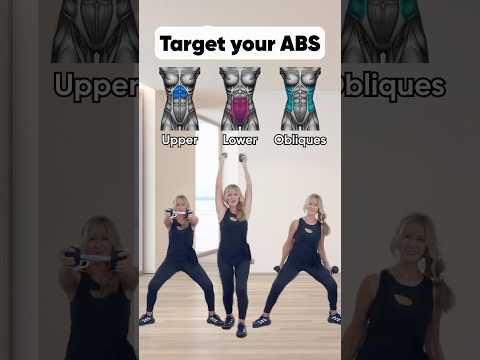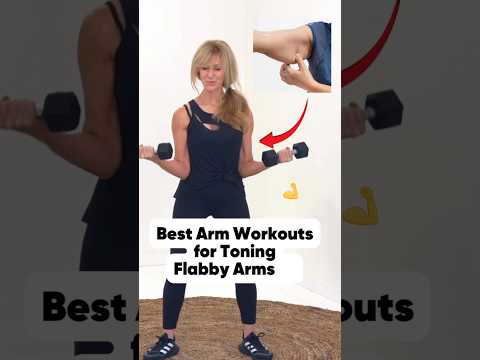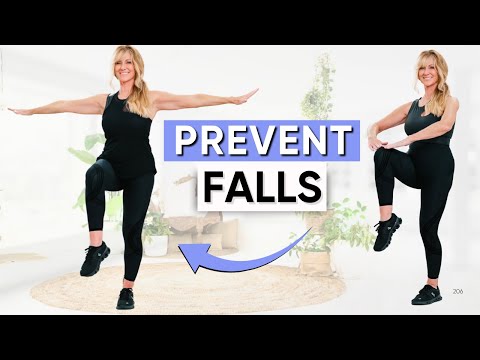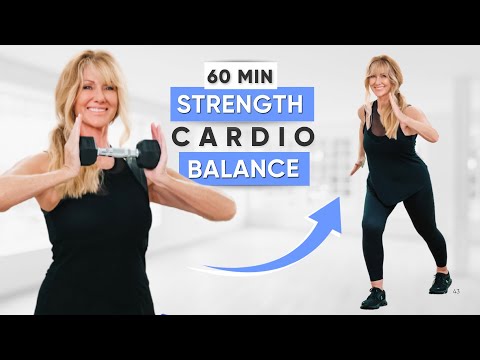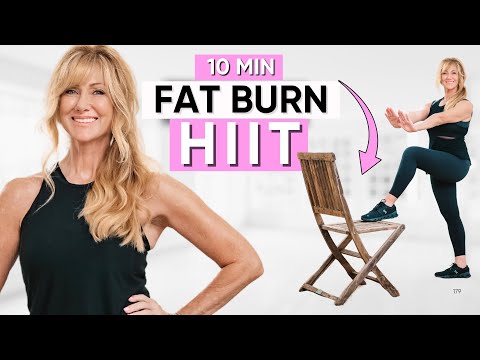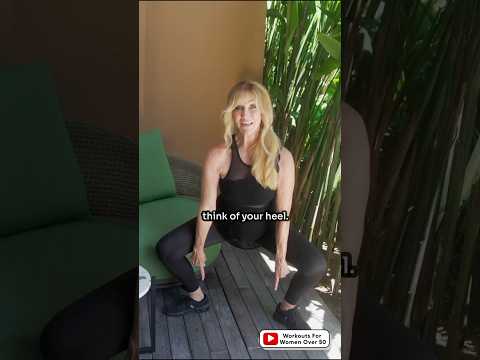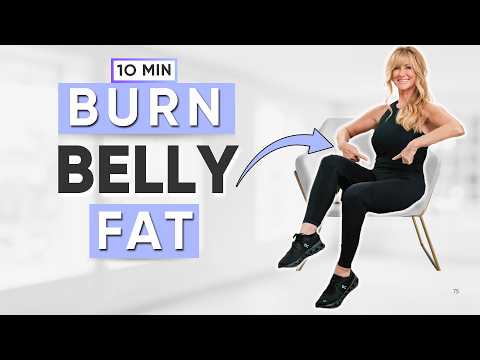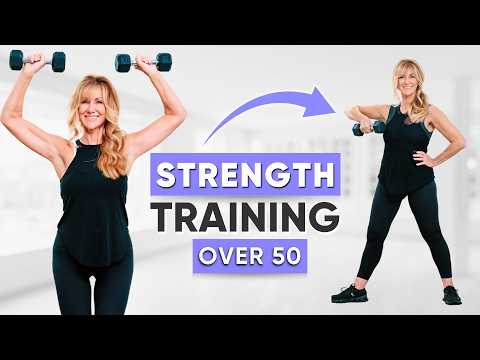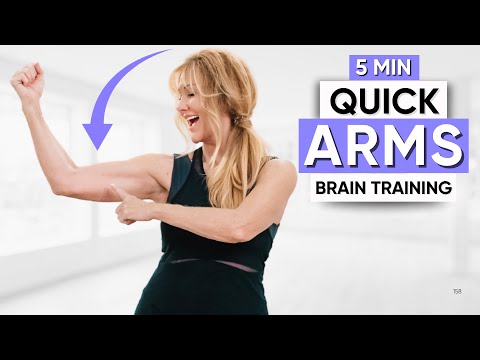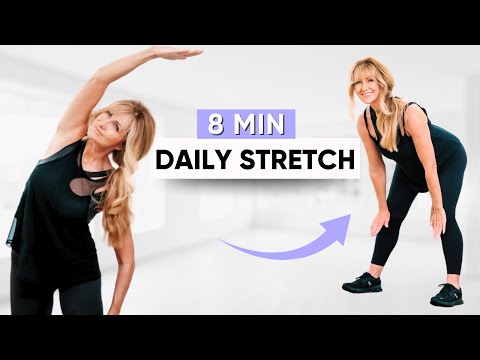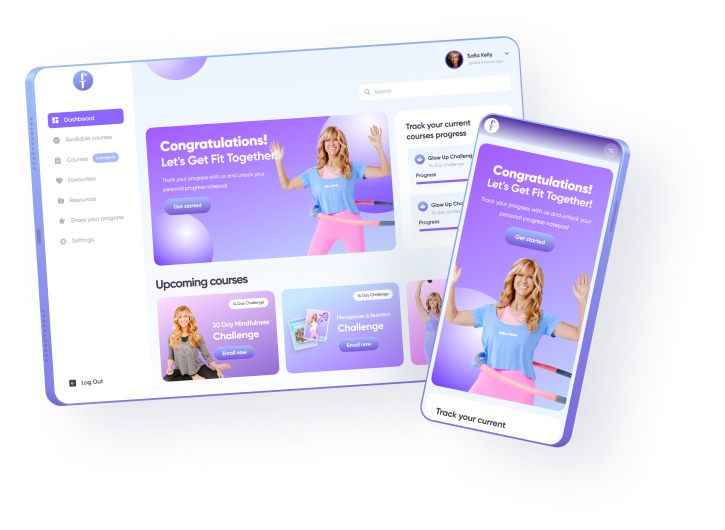Laura from our Fabulous50s community tried this chair stretches routine once and felt a surprising shift.
“After doing this just one day, the water retention in my left arm is less than it has been in months. I’ll keep coming back here for this one. Thank you!”
If mornings feel creaky or long sits leave you aching, chair stretches are your gentle reset. In just nine minutes, this seated routine loosens stiff areas, wakes up your circulation, and helps you move with ease—no mat, no floor work, just you and a sturdy chair.
Why Chair Stretches Matter After 50
As we move through our 50s (and beyond), we naturally spend more time sitting—working, reading, scrolling, or traveling. Over time, that stillness can make hips, shoulders, and the spine feel tight, and daily movements like getting up from a chair or reaching overhead can feel harder than they should. Regular chair stretches keep muscles flexible and joints moving through a healthy range, which supports comfort and confidence in everyday life.
There’s also the “sit less, move more” piece. Short movement breaks sprinkled through your day can reduce the build-up of neck and back discomfort from long sitting. Even 1–2 minute “microbreaks” are practical and have been linked with less musculoskeletal pain in active work settings—proof that tiny bouts of movement add up.
What You’ll Do in This 9-Minute Seated Routine
This routine gently moves your spine in all directions—forward/back (flex and extend), side to side (lateral bend), and rotation—while opening common tight spots like the chest and hips. That combination helps you feel lighter, taller, and more mobile right away. Stretching that balances opening the chest/hips with lightly engaging your back and core supports better posture over time.
Chair-based movement also suits busy schedules and tender joints. Research shows chair-based exercise can improve function and reduce pain in older adults—especially when you practice consistently in a way that feels good.
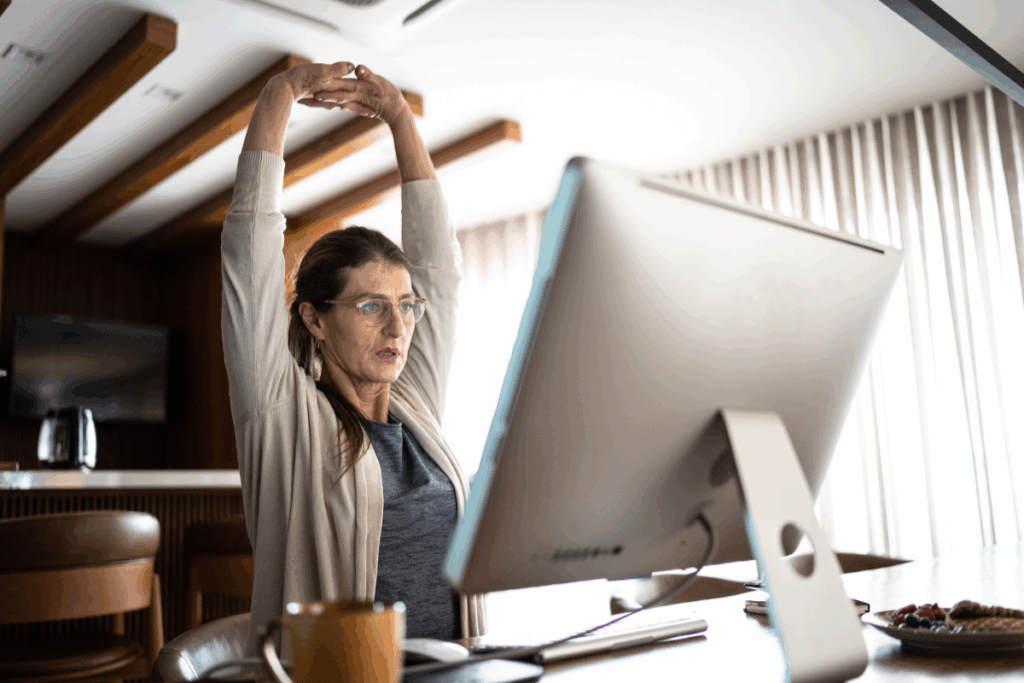
Why This Works
Stretching maintains flexibility and range of motion—two essentials for joint comfort and everyday ease (think: stairs, getting out of the car, or reaching a high shelf). Keeping tissues supple can lower stiffness and help prevent the “tight today, tighter tomorrow” cycle that can creep in with age.
Movement snacks beat marathons. Short, frequent bouts of movement help reset muscles and reduce discomfort from long sitting. Evidence suggests that brief microbreaks are a practical way to reduce musculoskeletal pain—and they don’t have to derail your day.
Chair-based exercise is effective. Systematic reviews and clinical trials show that chair-based programs can improve strength, function, and even pain interference in older adults—especially when done regularly and comfortably.
Calf and ankle pumping boosts venous return. Simple in-seat moves like ankle circles and foot pumps activate the “muscle pump” in your lower legs, which helps blood move back toward the heart—one reason travel and health organizations recommend them during long sits.
Practical Tips to Get the Most From Chair Stretches
Consistency is your superpower. A few minutes most days supports flexibility, posture, and circulation—benefits that compound quickly. If you sit a lot, sprinkle chair stretches throughout your day: after your morning coffee, between emails, and mid-afternoon when your shoulders creep up to your ears.
Pair this nine-minute routine with short standing or walking breaks to counter long sits. Research teams suggest brief, regular movement breaks to offset the effects of prolonged sitting—think a quick stroll or a mini stretch session every half hour when you can.
Science-backed, simple tweaks
- Move gently, never forcefully. Aim for a calm, comfortable stretch you can breathe in; your nervous system relaxes, and your muscles release more easily.
- Take microbreaks. One to two minutes of movement every 30–60 minutes helps reduce discomfort from sustained postures.
- Breathe with your belly. Diaphragmatic breathing can promote relaxation and support healthy pressure changes that may assist fluid movement—helpful if you notice puffiness or heaviness in the limbs.
- Add ankle pumps during long sits. On flights or road trips, alternate lifting heels and toes and make ankle circles to encourage lower-leg circulation.
- Think posture pairs. Stretch the front body (chest/hips) and lightly activate the back and core—this combo supports a taller, more comfortable posture.
- Use a sturdy chair. A firm seat with a backrest helps you feel supported so you can focus on breath and smooth movement.
A note on fluid retention: Gentle movement, elevation, and specific breathing techniques are often suggested to help move fluid. If swelling persists, is painful, or you have a condition like lymphedema, check with your healthcare provider for a personalized plan.
Make It Yours: Options & Alternatives
Every body is different. If a stretch feels too intense, reduce the range, add a pillow under your hips, or keep both feet on the floor. Comfort is the goal. Over time, you’ll notice your range expand naturally with consistent chair stretches practice.
If your day involves lots of sitting, add tiny extras: shoulder blade squeezes while waiting for the kettle, ankle pumps during phone calls, and one minute of Seated Cat–Cow before meetings. These micro-moves keep your joints nourished and your energy up without needing a full workout.
Frequently Asked Questions on Chair Stretches
How often should I do chair stretches?
Daily is wonderful, but three to five times a week will still make a noticeable difference. Short, regular sessions beat occasional long ones—especially if stiffness comes from long sits.
Can I do them at my desk?
Absolutely. Slide your chair back a little for space, sit near the front of the seat, and move slowly. For extra circulation, add ankle circles and heel-toe pumps during long calls or travel.
Is this enough exercise?
Chair stretches are a powerful piece of the puzzle. For overall health, older-adult guidelines include aerobic activity, strength training, and flexibility work each week—mix and match in ways that feel good to you.
Try It Today (We’re Cheering You On!)
You deserve to feel good in your body—today, not “someday.” Start with this 9-minute chair stretches routine once, notice how much easier your shoulders and hips feel, and then make it your morning wake-up or afternoon pick-me-up. Share it with a friend who’s been feeling stiff, and tell us in the comments where you feel the most tightness—we’ll recommend a stretch you’ll love.
Want guided routines designed specifically for women over 50? Explore Fabulous50s programs for posture, mobility, and gentle strength. Let’s keep you flexible, energized, and confident—every single day.




